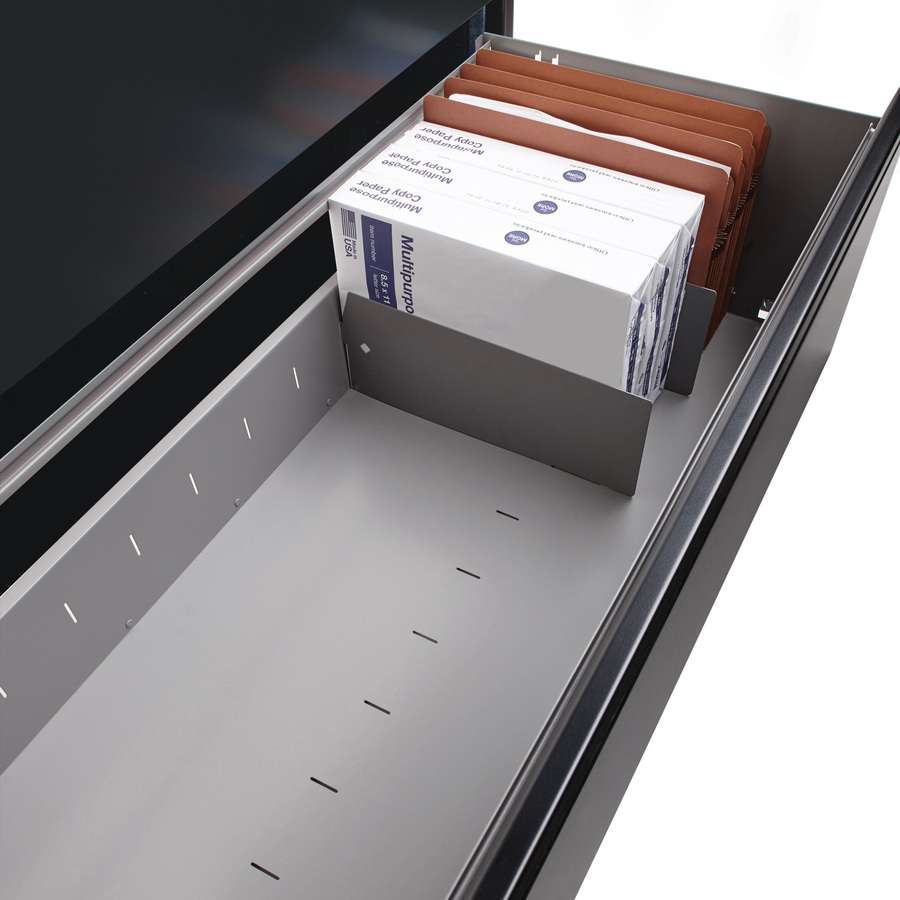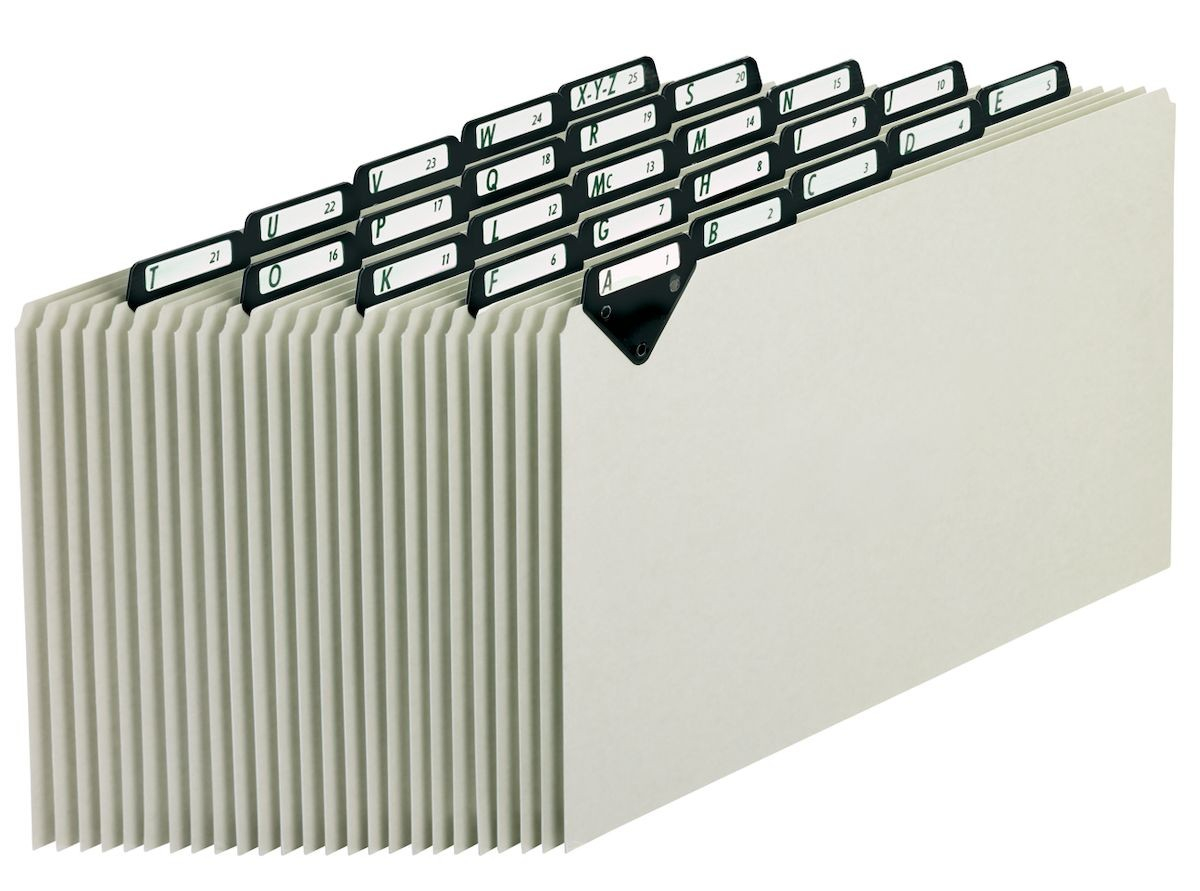Types of File Dividers

File dividers are essential tools for organizing and managing documents in filing cabinets. They help to separate and categorize files, making it easier to locate specific documents quickly and efficiently. File dividers come in various materials, styles, and designs to suit different needs and preferences.
Materials Used for File Dividers, File dividers for filing cabinet
The material of a file divider affects its durability, cost, and aesthetic appeal. Some of the most common materials used for file dividers include plastic, metal, and paper.
- Plastic File Dividers: Plastic file dividers are popular due to their affordability, durability, and ease of cleaning. They are also available in a wide range of colors and designs, making them visually appealing. Plastic dividers are resistant to moisture and tearing, making them suitable for use in various environments. However, they may not be as durable as metal dividers and can become brittle over time, especially when exposed to extreme temperatures.
- Metal File Dividers: Metal file dividers are known for their strength and durability. They are typically made from steel or aluminum and can withstand heavy use. Metal dividers are also resistant to bending and tearing, making them ideal for organizing large volumes of documents. However, they can be more expensive than plastic dividers and may rust if not properly maintained.
- Paper File Dividers: Paper file dividers are the most affordable option and are often used for temporary or short-term organization. They are available in various colors and designs and can be easily customized. However, paper dividers are not as durable as plastic or metal dividers and can easily tear or become damaged. They are also susceptible to moisture and can warp or bend easily.
Popular Divider Styles
File dividers are available in various styles to meet specific organizational needs. Some of the most popular divider styles include tabbed dividers, expandable dividers, and index dividers.
- Tabbed Dividers: Tabbed dividers feature tabs that extend beyond the divider, providing space for labels or indexes. These tabs allow for easy identification of the files behind each divider. Tabbed dividers are available in various sizes and configurations, with some featuring multiple tabs for more detailed organization. They are commonly used for organizing files alphabetically, numerically, or by subject matter.
- Expandable Dividers: Expandable dividers are designed to accommodate varying file thicknesses. They feature adjustable sections that can be expanded or contracted to fit the size of the files. This feature makes them ideal for organizing files that may vary in thickness over time. Expandable dividers are often used for organizing documents that are frequently added or removed.
- Index Dividers: Index dividers are similar to tabbed dividers but typically feature a larger, more prominent tab. These dividers are often used for creating a comprehensive index for a filing system. Index dividers can be used to create a master index for an entire filing cabinet or to organize specific sections within a file drawer. They are often used in conjunction with other divider styles to create a hierarchical filing system.
Choosing the Right File Dividers

Selecting the right file dividers is crucial for efficient organization and easy retrieval of documents. To ensure that you choose the most suitable dividers for your needs, consider the following factors.
Determining the Appropriate Size and Capacity
The size and capacity of file dividers should be chosen based on the dimensions of your filing cabinet and the volume of documents you intend to file. Measure the width and height of your filing cabinet drawers to determine the maximum size of dividers that will fit comfortably.
Consider the thickness of the dividers and the amount of space they will occupy when fully extended. For example, if you have a large volume of documents, you may need to use dividers with a smaller capacity to accommodate the bulk of the files.
To determine the capacity of a divider, consider the number of documents it can hold. For example, a divider with a 1-inch capacity can hold approximately 100 sheets of standard 8.5 x 11-inch paper.
Selecting Dividers with Clear Labeling Options
Clearly labeled dividers are essential for quick and easy document retrieval. Choose dividers with ample space for labeling, either with pre-printed tabs or blank tabs that can be customized.
- Pre-printed tabs are convenient for standard categories, such as alphabetical or numerical filing systems.
- Blank tabs provide flexibility for creating custom labels that match your specific filing needs.
Consider using a label maker or permanent marker to create clear and concise labels that are easy to read.
Considering the Type of Documents Being Filed
The type of documents being filed will influence the type of dividers you choose.
- For documents with a standard size, such as letters or invoices, you can use standard-sized dividers.
- For larger documents, such as reports or blueprints, you may need to use oversized dividers or consider using hanging folders for additional support.
Using File Dividers Effectively: File Dividers For Filing Cabinet

File dividers are essential tools for maintaining an organized filing system. They allow you to separate and categorize documents, making it easier to find what you need quickly. This section provides a guide on how to use file dividers effectively.
Inserting and Labeling File Dividers
Properly inserting and labeling file dividers is crucial for creating a functional filing system. Follow these steps to ensure efficient organization:
- Choose the Right Size: Select dividers that fit the size of your filing cabinet drawers. Ensure they are not too large or too small to avoid misalignment or overcrowding.
- Position Dividers: Insert dividers into the filing cabinet drawers, aligning them with the metal rails or slots provided. If your cabinet uses hanging folders, ensure the dividers are positioned correctly within the hanging folders.
- Label Dividers Clearly: Use permanent markers or labels to clearly label each divider with the category or heading it represents. Keep the labels concise and easy to read from a distance. Consider using a consistent labeling system throughout your filing system.
- Arrange Dividers Logically: Arrange the dividers in a logical order, such as alphabetically, chronologically, or by category. This allows for quick and efficient retrieval of documents.
Organizing Files Within Dividers
Organizing files within dividers involves arranging documents in a systematic way, making it easy to find specific information. Here are some common organizational methods:
- Alphabetical Order: Arrange files alphabetically based on the first letter of the document name or the name of the person or organization involved. This method is particularly useful for organizing customer files, invoices, or correspondence.
- Chronological Order: Arrange files by date, starting with the oldest documents at the front and the newest at the back. This method is suitable for organizing financial records, project files, or time-sensitive documents.
- Categorical Order: Group files based on specific categories, such as “Marketing,” “Finance,” or “Human Resources.” This method is useful for organizing documents related to different departments or projects.
- Using Sub-Dividers: Utilize sub-dividers within a main divider to further categorize documents within a specific category. For example, within a “Marketing” divider, you could use sub-dividers for “Email Campaigns,” “Social Media,” and “Print Advertisements.”
Maintaining and Replacing File Dividers
Maintaining and replacing worn-out or damaged file dividers ensures the longevity and effectiveness of your filing system.
- Regular Inspection: Periodically inspect your file dividers for signs of wear and tear, such as frayed edges, faded labels, or damage to the tabs. Replace any dividers that are no longer functional.
- Cleaning: Wipe down dividers with a damp cloth to remove dust and debris. This helps maintain their appearance and prevents the accumulation of dirt that can damage documents.
- Label Replacement: If labels become faded or damaged, replace them with new ones. Use a permanent marker or labels that are designed for long-term use.
File dividers for filing cabinet – File dividers are like the superheroes of your filing cabinet, keeping everything organized and easy to find. But sometimes, you need a different kind of hero, like a stylish and functional round mirror medicine cabinet for your bathroom. Just like file dividers keep your paperwork in order, a medicine cabinet keeps your toiletries and first-aid supplies neatly tucked away.
File dividers are like those little compartments in your backpack that keep your notebooks and pens from becoming a chaotic mess. They make organizing your paperwork a breeze, just like having small laundry room sink cabinets can keep your cleaning supplies in check.
With file dividers, you can easily find what you need, saving you time and frustration when you’re searching for that important document.